Grab your ScuttleButts and Grigris! Put on your helmets and game faces! Prepare to squeeze your body into the vast and inexplicable shapes of deep Earth…it’s time to go CANYONEERING!
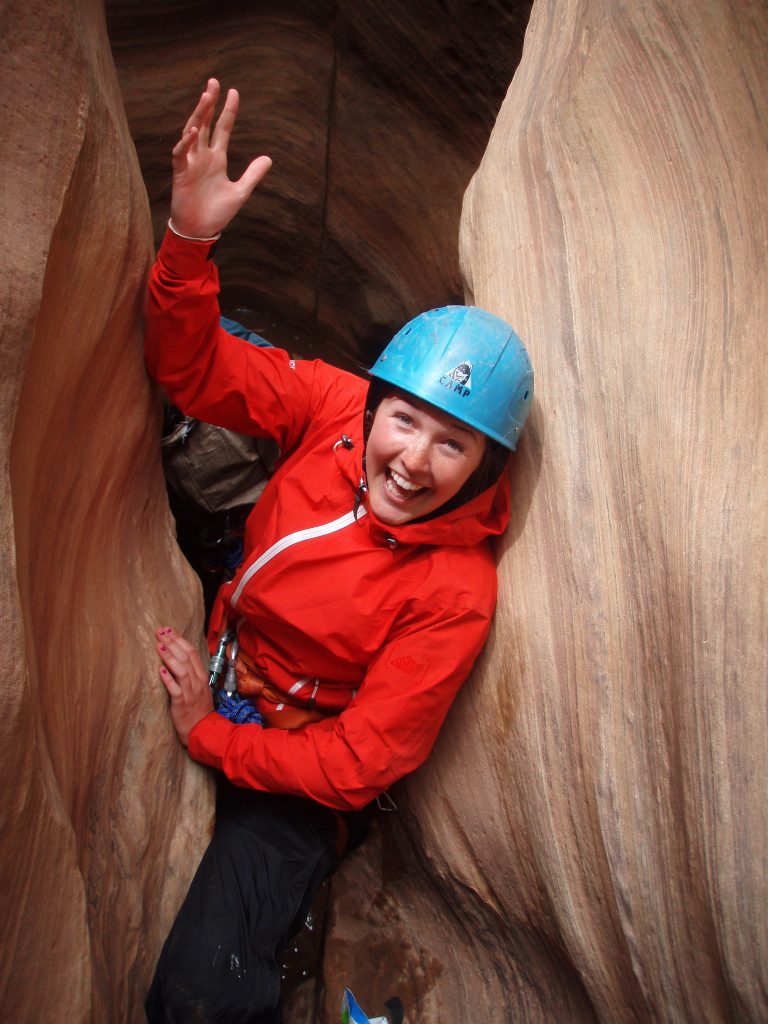
Or, that’s what I imagine a billboard for canyoneering might read. Does the quirky lingo catch your interest? You may be thinking, what is a “ScuttleButt” and why in the name of all that is good and beautiful in the world would I EVER want to wear one? Or maybe the mention of helmets, deep Earth and game face had the adventure-driven athlete buried within you twitching awake. Finally, perhaps my tactic of ALL CAPITAL LETTERS draws your attention, as though I am yelling at you about this really cool experience. Well good. Because I am.
But I am still confused what canyoneering is…
You’re right. I apologize. Commence explanation:
Canyoneering is the exploration of a canyon from point A to point B using a range of techniques that include hiking, scrambling, sliding, stemming, chimneying and rappelling. Imagine extreme hiking with a harness, a helmet and appropriate rope systems. Think reverse climbing and scrambling with a little butt-sliding. Maybe even a lot of butt-sliding. It is recess for adults where muscles you forgot existed get sore. Canyoneering is the intimate exploration of forgotten Earth. It is poetry in movement.
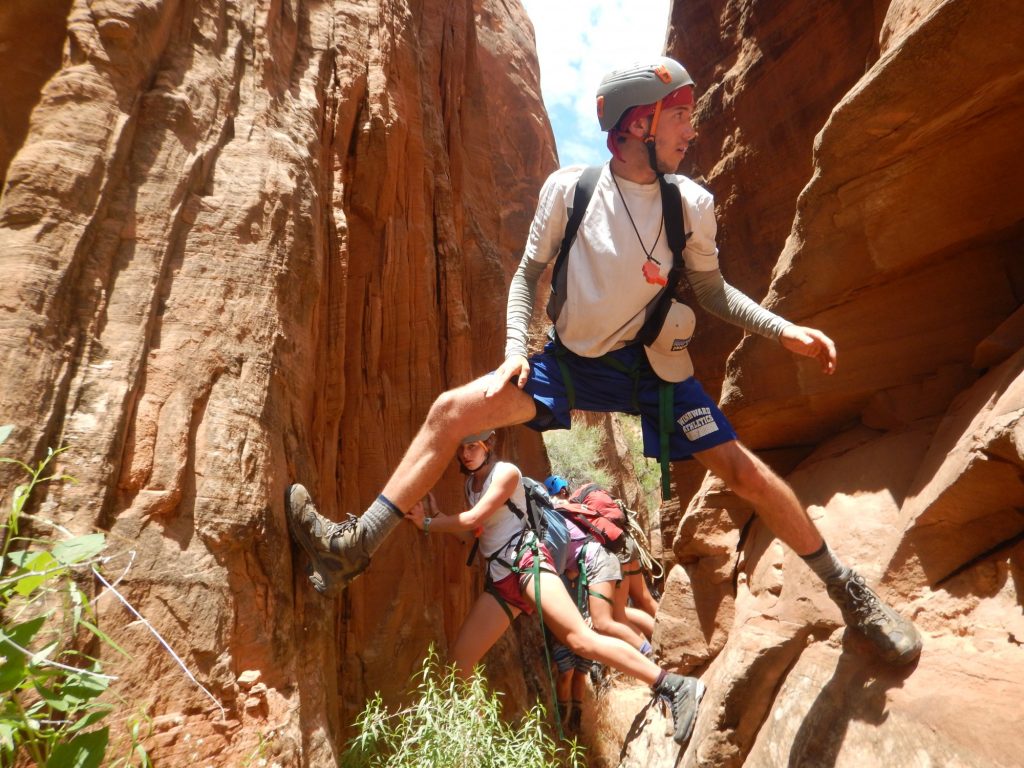
Photo by Dillon Mark
Okay. I’m interested…but it sounds extreme?
Let’s talk about risk. In the field of outdoor recreation and education, we discuss and assess risk constantly. Risk and those nervous feelings associated with risk are what make recreational activities fun. Whether you experience an adrenaline rush from paddling through powerful rapids, or overcome the fear of falling to climb a challenging rock face, the actual and perceived risk in those moments play a role in how you process and learn from the experience. Walking backwards off a cliff to rappel into a canyon will teach you a lot about yourself and how you react in potentially stressful or scary situations.
Note actual versus perceived risk. Actual risk is inherent in outdoor activities and is often uncontrollable. Examples of actual risk in canyoneering are flash floods and rock fall. Instructors are preventative when it comes to actual risk, checking weather reports before entering a canyon and requiring helmets. Perceived risk, on the other hand, is subjective and often controllable. Examples of perceived risk in canyoneering are fear of heights and/or fear of falling. Instructors are trained to mitigate these risks through rope systems that will support your weight and other safety systems. Perceived risk is merely that: perceived.
Chances are, if the idea of canyoneering makes you nervous, you should try it. You will learn a lot about yourself through the experience.
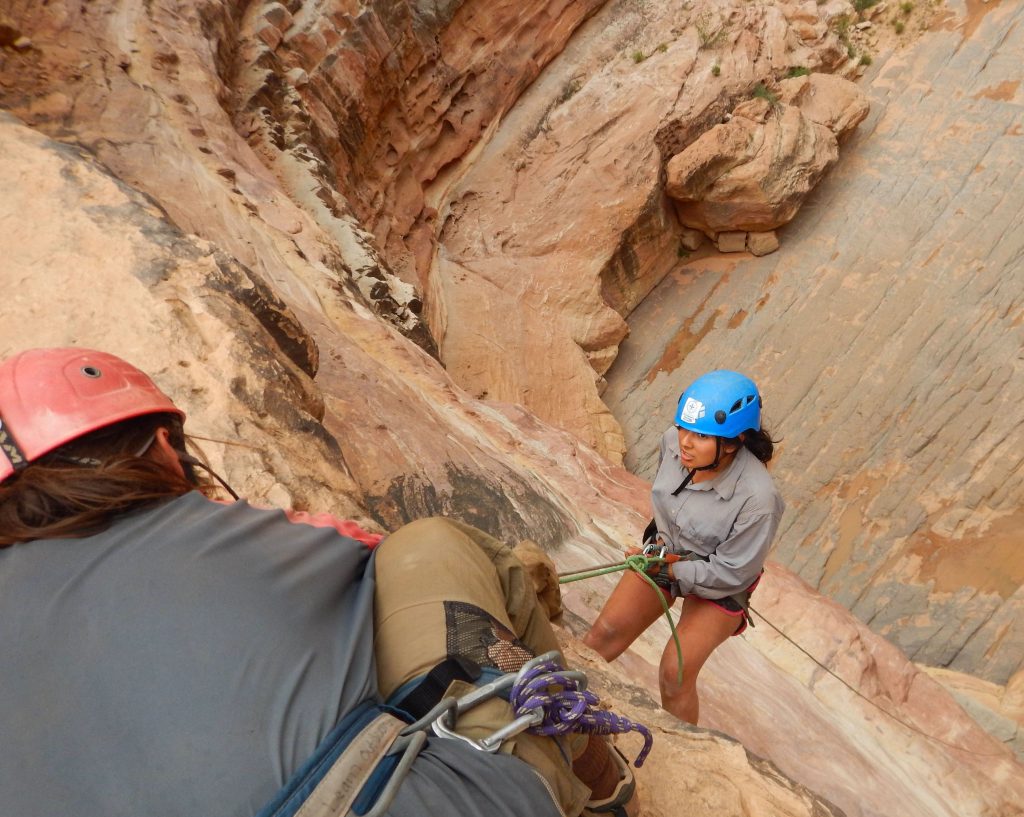
But I’m not an outdoorsy person…can I still try canyoneering?
YES. One merely goes outdoors to be “outdoorsy.” If you go running once a month, call yourself a runner. If you occasionally climb 5.7 at the gym, call yourself a climber. If you enjoy the outdoors and want to try something new like canyoneering, by all means you’re outdoorsy enough!
That being said, your Outward Bound Instructor will be there to show you the ropes (pun intended) and make sure you have a safe and fun first experience. Canyoneering is no joke: do not try without professional guidance.
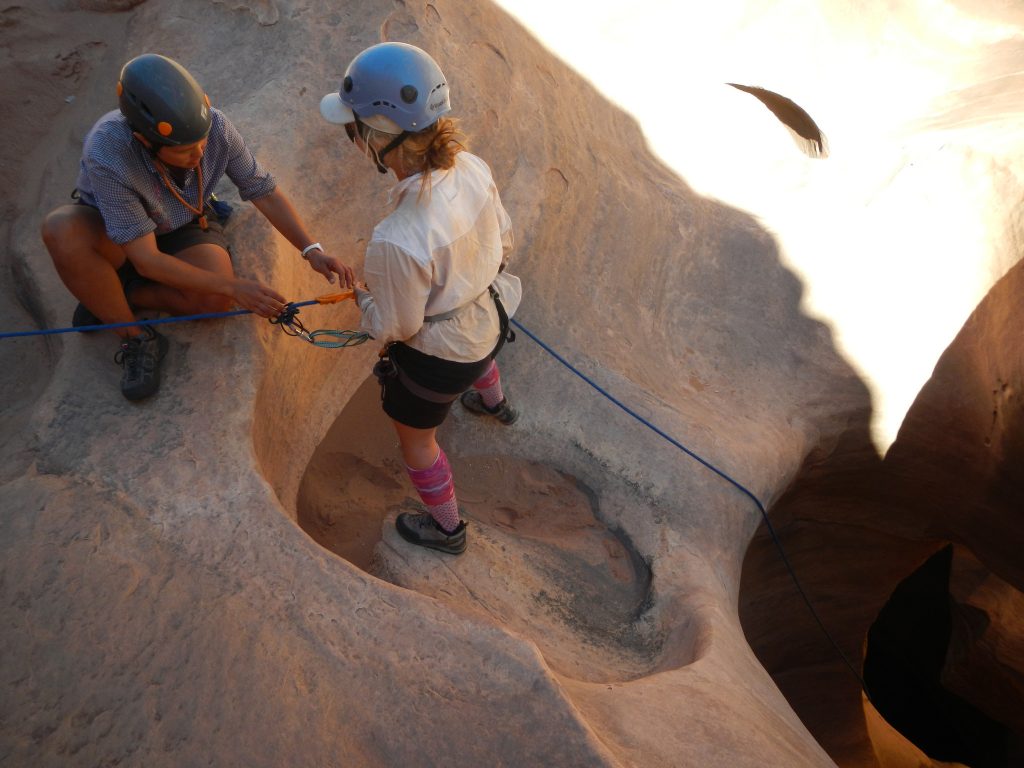
Photo by Mike Coyle
Can you paint me a picture of a day in the life of canyoneering?
Why, yes, I would love to—thanks for asking!
Imagine yourself waking up to a beautiful sunrise with a group of new friends after a cool night under the star-studded sky. You eat some breakfast, maybe sip some coffee and put on canyoneering clothes (long sleeves and pants that you don’t mind tearing up). You put at least two liters of water in your pack, some extra clothing layers for chilly canyon shadows, your harness, helmet, lunch and snacks. As a group, you double-check for the first-aid kit, technical gear, and stoke (term meaning enthusiasm and excitement). You marvel at the rock formations of the area as you and your group hike a few miles from your base camp to the start of the canyon.
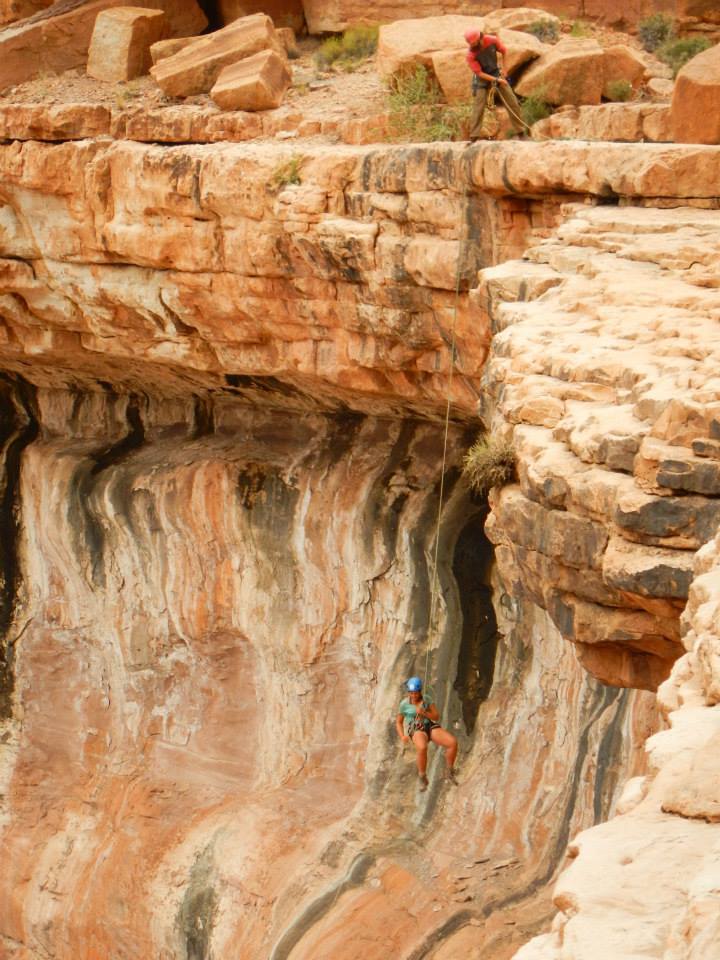
Photo by Cara Befort
It all starts with a 100 foot rappel! Nerves set in as your Instructor explains how rappelling works and you watch the group descend one by one into the canyon. Soon it’s your turn so you slowly approach the precipice. Before the edge, your Instructor helps you attach to the anchor and teaches you how to lower yourself. They make a joke and give you words of encouragement as you chuckle nervously and slowly edge your way backward. They have you on an additional rope for added protection, since it is your first time. This is where you feel equally crazy and in control, lowering yourself inch by inch over the initial ledge until you are smoothly able to descend, just like Spiderman. You realize you like this rappelling thing.
At the bottom, the Instructor frames safety in the canyon and points back up at the cliff everyone just descended, noting how hard or impossible it might be to go back up. The only way out is forward. Your heart beats with excitement about what adventure lies around the next curve in the canyon.
To find out the rest, you’ll just have to do it yourself.
How do I sign up?
Outward Bound offers a variety of courses with canyoneering elements. Simply click on “canyoneering” under the Course Finder activity menu on the Outward Bound website and you will be directed to available canyoneering courses. We look forward to seeing you out there!
About the Author
Sabrina Stein is an Assistant Instructor for the Northwest Outward Bound School and a Logistics Coordinator for the Colorado Outward Bound School Southwest Program. She is drawn to the tenacity of life in Southwestern deserts and the magic of rivers everywhere. Sabrina pursues rafting as a means to both, and for the added benefit of strong arms and a flexible mentality. Other hobbies include writing, reading, drinking coffee, getting haircuts, singing extremely loud in the car and source-to-sea rafting trips. She will bake you cookies if you hang out with her long enough.
OTHER POSTS YOU MAY LIKE
Read More
Read More
Read More




